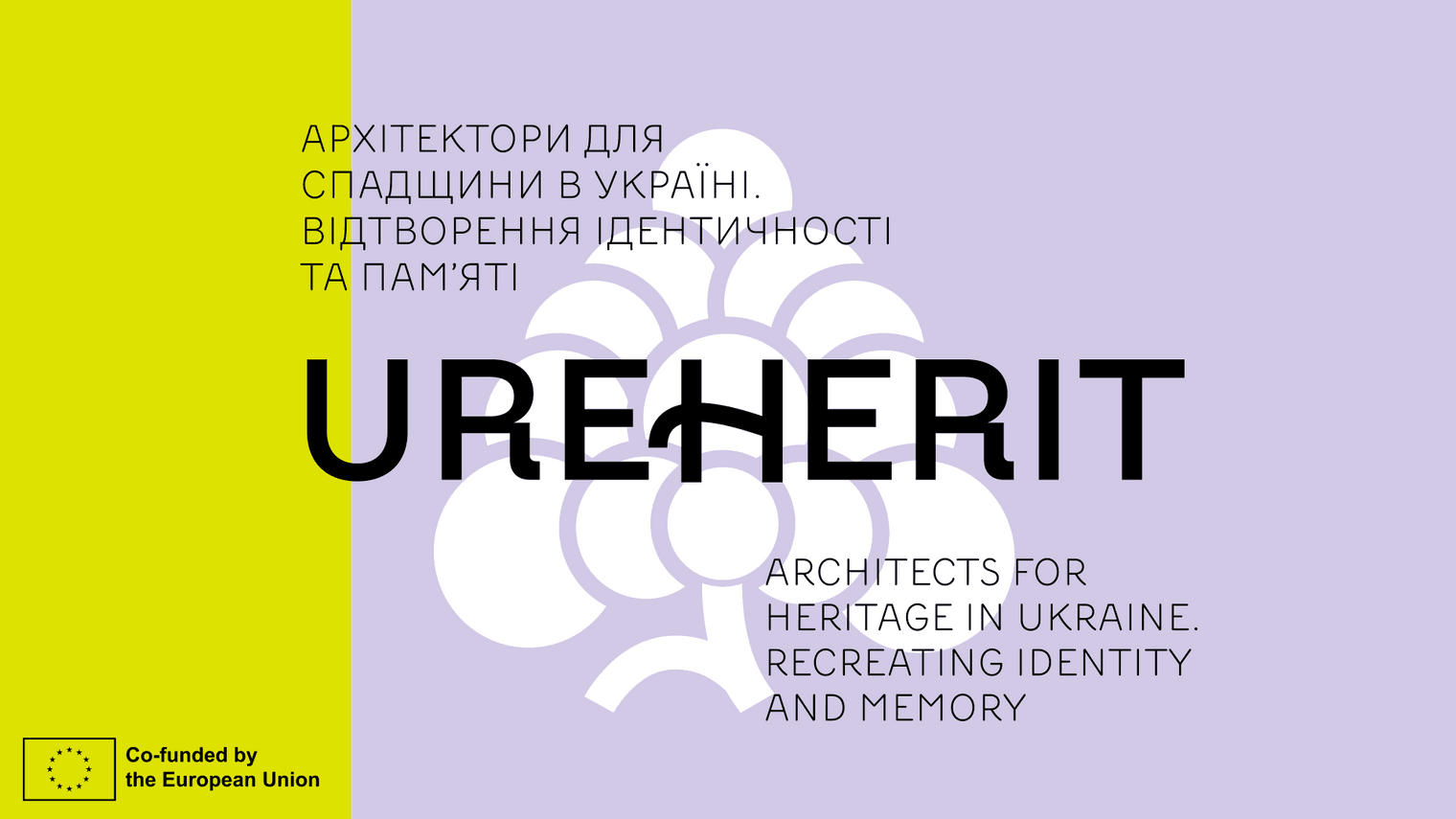In August 2023, the Architects Association of Lithuania initiated the international European cultural project “UREHERIT. The Architects for Heritage in Ukraine: Recreating Identity and Memory" that will last three years and is co-financed by the European Union program "Creative Europe.”
The project aims to address heritage as a resource for sustainable cultural, social, environmental, and economic recovery while solving challenges of preservation, re-definition, highlighting the national and local cultural identity, and reflecting the memory in the rebuilding.
According to the campaign, European and Ukrainian heritage specialists, architects, planners, engineers, other officers of local authorities, and communities of Ukrainian cities will analyze topics of protection and restoration of Ukrainian cultural heritage. It is planned through research, workshops, public discussions, events, and educational programs for architectural schools.
It is the first time European and Ukrainian participants will experiment with building competence in heritage protection and regeneration of culturally meaningful plans and projects, which aims to result in a set of recommendations on:
- heritage value assessment methodology and damage assessment methodology;
- a strategy for how to regenerate valuable heritage in a sustainable, economically and culturally meaningful way;
- holistic renovation of soviet housing in Ukraine;
- methodology of participatory process in heritage protection: Urban forums and workshops “Healing through restoration of heritage”;
- architectural design competitions: implementation and financial tips;
- technologies and heritage;
- improvement of educational programs at architectural schools;
- the content, financing, and organization of the CPD (continuous professional development) program on sustainable recovery with heritage.
“With this project we want to contribute to recovery of an artistic sector – architecture – inviting Ukrainian architects (and heritage protection specialists in particular) to collaborate with European architects on an equal footing: to share knowledge and experience and together search for a new, Ukraine-suited, methodology and ways to preserve and recover Ukrainian urban and architectural heritage in a sustainable, inclusive manner,” says Rūta Leitanaitė, the initiator and coordinator of the project, a member of the Council of the Architects Association of Lithuania.
As Ukrainian and European specialists will work and create together, the project will provide two–way knowledge (Ukrainians learning from Europeans, Europeans learning from Ukrainians). On the other hand, through the co-creation process, the participating EU partners will get innovative knowledge towards contemporary heritage preservation and recovery that could be used elsewhere, not only in Ukraine.
“Ukraine, as any other place, requires tailor-made, and not copy-paste solutions. Together with other project partners, we agreed from the beginning to adhere to the principle that all the methodologies, recommendations, and proposals will be created together with Ukrainian architects, culture experts, and communities, trying to adapt the best European practices to the unique Ukrainian context,” she added.
The project will last 36 months (until April 2026). The campaign starts with a public conference, “UREHERIT: Architects for Heritage in Ukraine,” dedicated especially to the project. It will happen on 13 October 2023 in Lviv, Ukraine.
The program of the conference will be available at UREHERIT Facebook. You also may find more info on the UREHERIT official website.
Cultural heritage endangered by war
Since the beginning of the full-scale invasion of Ukraine, Ukrainian organizations relocated thousands of exhibits from eastern Ukraine to undisclosed locations as part of efforts to protect cultural artifacts. It involved exhibits from museums, archives, galleries, and libraries. According to Bloomberg, this relocation campaign is one of the largest in recent history, reminiscent of similar European efforts during World War II.
Many big Ukrainian cities, including Lviv and Kyiv, have wrapped or covered immovable monuments with sandbags, boards, or plastic. Locals disassembled and moved some historical sites to shelters, while monuments, statues, fountains, and church stained glass protected by wooden structures and plastic wrapping.
As of 26 July 2023, UNESCO confirmed that Russia destroyed and damaged 281 cultural heritage sites in Ukraine: 118 religious buildings, 103 historical buildings and cultural institutions, 19 monuments, 27 museums, 13 libraries, and one archive.
Trending Now
For example, on 16 March 2022, Russia bombed the Donetsk Drama Theater in Mariupol, which was being used as a civilian bomb shelter. The theater was one of the oldest in eastern Ukraine, built in 1956-1960.
On 19 August 2023, Russia also attacked the Chernihiv Drama Theater. The theater in Chernihiv is one of the oldest regional theaters in Ukraine, established in the 1920s during the Ukrainianization of the Ukrainian SSR.
Some countries have offered assistance to help restore damaged Ukrainian cultural monuments. For instance, Italy's Minister of Culture, Dario Franceschini, has offered to help rebuild the Mariupol Drama Theater as soon as possible.
However, the European and Ukrainian coalition’s project will initiate a platform for long-term cooperation between architects, urbanists, landscape architects, and antiquarians who might protect and develop heritage as a resource for the recovery of Ukraine.
Read more:
- Russian troops damage 664 cultural heritage sites in Ukraine since beginning of war
- Russia’s missile attack on Lviv violated World Heritage Convention by targeting protected building, UNESCO says – CNN
- UNESCO director handed Zelenskyy certificate on the inclusion of the historic center of Odesa in the List of World Heritage

